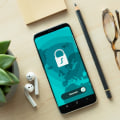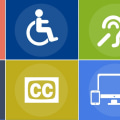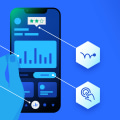In today's digital age, collaboration has become more crucial than ever for remote design teams. With the rise of remote work and distributed teams, finding effective ways to collaborate and communicate has become a top priority for businesses and organizations. In the fast-paced world of design, where teamwork and creativity are essential, having the right tools can make all the difference. That's why in this article, we will be exploring some of the best collaboration tools available for remote design teams.
Whether you're a designer, project manager, or team leader, this article will provide you with valuable insights and resources to maximize collaboration and streamline your design process. So, let's dive into the world of remote design collaboration and discover the tools that can help take your team to new heights. With the rise of remote work, collaboration among design teams has become more important than ever. As a UI designer, you are constantly looking for ways to improve the usability and visual appeal of your website or mobile app. This article will cover all about collaboration tools for remote design teams, providing you with valuable resources to enhance your design process and deliver outstanding results.User-centered design is a crucial concept for any UI designer.
It involves understanding the needs and preferences of your target audience in order to create a user experience that meets their expectations. By implementing user-centered design techniques, you can ensure that your designs are intuitive and user-friendly, leading to higher satisfaction and engagement. One key aspect of user-centered design is conducting user research. This can include surveys, interviews, and usability testing to gather insights on how users interact with your design. By understanding their behavior and preferences, you can make informed decisions on how to improve your designs. In addition to understanding user needs, it's also important to consider responsive design in today's multi-device world.
Responsive design ensures that your website or app looks and functions seamlessly across different devices, such as desktops, laptops, tablets, and smartphones. This is crucial as more and more people access the internet through their mobile devices. There are various approaches to responsive design, such as fluid grids, flexible images, and media queries. It's important to understand these techniques and apply them in your designs to ensure a consistent and optimized experience for all users. As technology continues to evolve, so do the trends in UI and UX design. Staying updated on the latest trends can give you a competitive edge in the industry.
Some current popular trends include minimalism, microinteractions, and dark mode. By incorporating these into your designs, you can create modern and visually appealing interfaces that users will love. Now, let's dive into the main focus of this article - collaboration tools for remote design teams. These tools are specifically designed to facilitate collaboration and communication among team members who are working remotely. This is crucial for ensuring a smooth and efficient design process, despite not being physically in the same location. Some popular collaboration tools for remote design teams include project management platforms like Asana and Trello, which allow teams to organize and track tasks and deadlines.
Communication tools like Slack and Microsoft Teams are also essential for remote teams to stay connected and share updates in real-time. In terms of design collaboration, there are tools like Figma and InVision that allow multiple designers to work on the same project simultaneously. This streamlines the review and feedback process, making it easier for teams to make revisions and deliver high-quality designs. In conclusion, collaboration among remote design teams is crucial for successful UI design projects. By implementing user-centered design techniques, considering responsive design, staying updated on trends, and using the right collaboration tools, you can enhance your design process and deliver outstanding results. So don't hesitate to try out these tools and see how they can benefit your team and projects!
Collaboration Tools for Remote Design Teams
In the fast-paced world of UI design, collaborating with remote teams can be challenging.However, with the right tools, you can streamline your design process and produce exceptional results. Here is a comprehensive list of collaboration tools that will enhance your design process and make working with remote teams a breeze.
Keeping Up with UI/UX Trends
In the fast-paced world of design, it's crucial to stay on top of the latest trends and techniques. As a UI designer, your goal is to create visually appealing and user-friendly designs that stand out from the competition. To achieve this, you need to keep up with the ever-changing landscape of UI/UX trends. One trend that has been gaining traction in recent years is the use of microinteractions.These small animations or visual cues add a touch of personality to your design and can greatly improve the overall user experience. Another trend that continues to dominate is the use of bold and vibrant colors. This not only adds visual interest to your design but also helps to create a strong brand identity. On the other hand, there are also some design trends that have become outdated and should be avoided. For example, the use of stock photos has become overused and can make your design look generic.
Another trend to avoid is excessive use of gradients, which can make your design look dated and cluttered.
Understanding User-Centered Design
User-centered design is a crucial aspect of creating a successful and seamless user experience. It involves understanding the needs, preferences, and behaviors of your target audience and using that knowledge to inform your design decisions. This approach puts the user at the center of the design process, ensuring that their needs and wants are prioritized. One technique for creating a seamless user experience is conducting user research. This can involve surveys, interviews, or usability testing to gather insights and feedback directly from your target audience.By understanding their pain points and preferences, you can tailor your design to meet their needs. Another important technique is prototyping. This involves creating a working model of your design to test and gather feedback before finalizing the product. This allows for iterative improvements and ensures that the final design meets the needs of the users. Collaboration tools for remote design teams play a crucial role in implementing user-centered design. They allow for easy communication and sharing of ideas, as well as providing a platform for remote user testing.
With these tools, designers can collaborate effectively and gather valuable feedback from users, even when working remotely.
Responsive Design: Adapting to Different Devices
When it comes to designing for different devices, responsive design is essential. With the increasing use of smartphones and tablets, it is crucial that your website or mobile app looks and functions seamlessly across all screen sizes. One approach to optimizing your designs for different devices is to use a grid system. This allows you to create a layout that can easily adapt to different screen sizes, making your design more flexible and user-friendly. It also helps to maintain consistency in your design across different devices. Another important aspect of responsive design is considering touch-friendly elements.This means designing buttons and other interactive elements that are easy to tap on a touch screen. This can improve the overall user experience and make your design more accessible. To ensure that your design looks great on all devices, it's important to test it on different screen sizes and make adjustments accordingly. This will help you catch any issues or inconsistencies and make necessary changes before your design goes live. By incorporating these approaches and tips into your design process, you can create responsive designs that adapt seamlessly to different devices. This will not only improve the usability of your website or app but also enhance the overall user experience. Collaboration is key in achieving successful and impactful UI design.
With these tips and resources, you can streamline your design process, improve team communication, and stay on top of the latest trends. Whether you are a freelance designer or part of a remote design team, these collaboration tools will help you deliver exceptional results.


